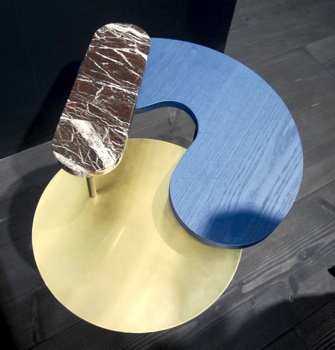Inside the Closed Doors of
Interior Decoration Show

Maison & Objet, Paris’s biannual home-decoration trade fair, celebrated its 20th anniversary in September by changing its approach, focusing less on specialization and more on broad-based trends and lifestyles in an attempt to stay in tune with consumers’ evolving habits.
This ties in well with the current retail trend as the numbers of “multi-offer,” “concept” and “lifestyle” stores increase. What’s behind it all? Financial reality! Retailers can no longer survive by selling just one item or brand. The global recession and e-stores have placed huge pressures on physical stores, particularly mid-range and mass-market ones. How to survive? Create a brand/lifestyle and step into the world of “experiential shopping.” A consumer can now pop into a store and find everything from furnishings to fabrics and food, all with a defined brand identity.
At Maison & Objet, this translated into the rearrangement of offerings into three categories: “Maison” for interior decoration, furniture, home accessories, lighting and fabrics; “Luxury, Design & Interior,” for unique and bespoke products and technical innovations; and “Objet,” for the small or distinctive additions that enrich our interiors, from the useful to the frivolous: kitchen utensils, home fragrances, candles, etc.
Processes, the nature of luxury and the provenance of materials were strong themes this year. Trendcasting agency Elizabeth Leriche chose “Precious” as its theme, with artisans, artists and designers demonstrating how they rewrite the rules of opulence to create a post-bling aesthetic, examining such questions as What is truly precious? Will the ultimate luxury be immaterial?
A highlight was Showzi Tsukamoto, who came from Tokyo to demonstrate Kintsugi, the Japanese art of repairing broken pottery with lacquer mixed with powdered gold, silver or platinum, treating breakage and repair as part of the history of an object, rather than something to disguise.
Another standout from Japan was Fedeca, a Japanese cutlery brand founded in 2014 by Kanzawa Works, a company with 120 years of history. “Tools designed to create art” was Fedeca’s exhibition theme, with live demonstrations showing its tools being used to make wooden chairs.
Fedeca is now manufacturing kanna, wood-working planes, which the user pulls rather than pushes, as in Western planes. Tokunga Furniture uses these planes when making its products instead of sandpaper, which rubs away the natural pattern of the wood.
Also from Japan, the Arita 400 project showcased new porcelain designs by Arita, founded in 1616. Its products are highly valued in Japan as works of art and are also widely used in restaurants and homes. Newsflash: the items exhibited at Arita 400 are now on sale at the Maison Wa store (8 bis, rue Villedo, 75001 Paris).
Other highlights of the show:
• A collaboration between Finlayson, a Finnish textile manufacturer founded in 1820, and Tom of Finland (Touko Laaksonen), who once said, “I know my little ‘dirty drawings’ are never going to hang in the main salons of the Louvre, but it would be nice if – I would like to say ‘when,’ but I better say ‘if’ – our world learns to accept all the different ways of loving. Then maybe I could have a place in one of the smaller side rooms.” He may not yet be in the Louvre, but he was showcased at Maison & Objet.
• Cinq Points, a new French contemporary architecture products label, founded by Laurence Calafat, an architect who designs and produces games and stationery with a refined, sober monochromatic designs. Her mission is to spread contemporary architecture to the wider public.
• Danish design company &Tradition, which references the old masters “while giving space to new designers to define future classics,” presented a series of three multi-tiered tables mixing marble, oak veneer, brass and steel by Spanish designer du jour Jaime Hayon, who took inspiration from Alexander Calder’s kinetic sculptures.
• British designer Simon Hasan presented prototypes of his wrap pendant light made from vegetable-tanned leather and brass fittings. His work is inspired by the collision of industrial processes and ancient crafts during the Industrial Revolution. I particularly liked his molded vegetable-tanned leather and glass vessels, which had an almost medieval feel to them.
• Max Benjamin, an Irish fragrance company, sells candles handmade in its workshops in rural Ireland using soya, coconut and beeswax and Italian cotton wicks for fabulous burn quality.
Favorite